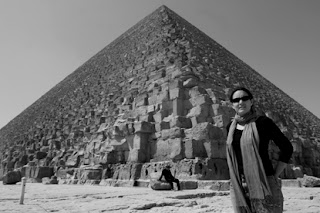A Stone

A Stone…
After visiting some ancient ruins from the dawn of documented history, my friend and I drove throughout the hills surrounding Madaba. The vast openness reminds me of the Badlands in South Dakota, but the signs showing the baptism sight of Jesus and the spot where Moses saw the promise land quickly indicate the history of this landscape.
A boy picks up a stone as our car drives by and acts as though he’s going to throw the rock at his friend. He sees us approaching, turns to us and pulls his arm back. I see the stone; it’s large and would do quite a bit of damage. I hold my breath, curiously wondering if he will actually throw it. As time slowed and I quickly assessed the situation the boy seemed to make eye contact and calculate the same assessment. He pulls back and my heart races as I wonder what would happen if he did it, if he just let that stone fly at our windshield. He stops at the last minute and laughs at his friend. I ask my Jordanian friend with the Chicago accent what would have happened if he had thrown the stone at us.
“I would have kicked his ass.” Though she said it with a quick laugh, I have no doubt that she would have done just that, done a quick 180 degree turn and hunted that boy down.
Where does the violence stem from? At what point does the action of causing destruction become inherent? We have all participated in some degree of violence during our lifetime, even mimicking the larger acts of war. I remember spending hours playing war games in the woods behind my church as a child. At church! At what point does a society embrace violence as a means of problem solving and at what age does a child distinguish between the playful act of throwing a stone at his friend and hurling a rock at the windshield of a speeding vehicle? What elements within that child’s environment cause him to act violently towards the presence of strangers? Is he taught by his elders; does he mimic the images seen on television; is violence emphasized during his religious interactions and education? Are the violent tendencies merely the ramifications of living in a certain type of environment, with little opportunity of advancement for a sustainable future?
I pondered these questions as we drove through the Muslim villages outside Madaba and into the Christian sections of the town. For centuries man has resorted to violent acts in the name of his god. Can religious communities continue to coexist in this era of emerging fundamentalism? Or will nationalism remain a stronger tie than religion to help keep peace between such differing religious communities? I will continue to revisit this theme throughout the project, as I search for a deeper understanding of the elements which make this ability to coexist possible, or not. I do not expect to find answers, merely a better understanding.


No comments:
Post a Comment